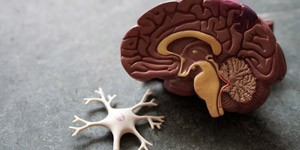By Mariano Garcia de Palau

Born in Barcelona, 17 February 1956. Graduated in medicine and surgery from the University of Barcelona in 1979. For 38 years has worked as an emergency physician in the area of occupational medicine. He became interested in cannabis by chance, and for the last 15 years has studied its therapeutic uses.
Currently he continues to advise on cannabinoid treatments and performs clinical work with patients, collaborates with various organizations and associations, serves as Senior Consultant for Grupo Curativa Colombia and is a spokesperson for the Spanish Medical Cannabis Observatory.
Fibromyalgia is a chronic condition whose etiology and cause are unknown. Among other symptoms, it is characterised by chronic widespread musculoskeletal pain, with a low threshold for pain. As tends to happen in patients suffering chronic pain, there is often hyperalgaesia (greater than anticipated sensitivity to pain for a given stimulus) and allodynia (where normally non-painful stimuli, such as the rubbing of clothes, is found to be painful).
Chronic pain tends to be accompanied by other symptoms, fundamentally anxiety and depression, fatigue and various types of insomnia. However, there may also be paresthaesia (pins and needles), stiffness in joints, headaches, a sensation of swelling in the hands and problems with concentration and memory. The natural course of fibromyalgia is chronic, with the intensity of the symptoms fluctuating over time. Some phases are easier to tolerate, with less pain and some improvement in other symptoms. The variations sometimes depend on the time of year. In many cases, emotional factors also have a very notable influence, as do family situation, socio-economic level, etc. The diagnosis for fibromyalgia is clinical. There is no objective test for the disease, and nor are there any decisive analytical, imaging or anatomo-pathological tests.
A recent survey carried out in several European countries estimated that 10-15% of the general population have chronic musculoskeletal pain in different locations. Most patients present pain on palpation in various areas of the body. When a patient has suffered widespread pain for at least three months and moderate pressure in a physical examination triggers pain in more than 11 of 18 previously defined points, in addition to presenting sleep disorder, fatigue and cognitive alterations, the consensus is that he or she meets the criteria for fibromyalgia. This is the case in 2.4% of the Spanish population, with a clear predominance in women (4.2% as compared to 0.2% in men) and a peak in prevalence between 40 and 49 years. (Estudio Episer 2016)
Pain
The most obvious symptom of fibromyalgia is widespread musculoskeletal pain. The pain generally occurs in several areas throughout the body. However, it might start in one region, such as the neck and shoulders, and then appear in other areas after a time.
The pain caused by fibromyalgia has been described in many ways, such as a burning sensation, accompanied by stiffness or a strong and lasting pain. Sometimes there are characteristics of neuropathic pain. The pain often varies depending on the time of day, level of activity, weather, sleep patterns and stress management. Many people with fibromyalgia say they always feel some pain, albeit intermittent. Many patients report severe pain, making it practically impossible for them to perform any activity.
The sensitive areas or points associated with fibromyalgia are similar in location to those found in other forms of muscle and bone pain, such as epicondylitis or tennis elbow.
The sensitive points that most often cause pain in fibromyalgia are the so-called "trigger points". However, many other areas of muscle and soft tissue, such as tendons, fasciae and muscles can also trigger pain, although patients often do not report pain in these points until properly explored by a healthcare professional.
Fatigue and sleep disorders
Most people with fibromyalgia suffer some degree of fatigue. This may be the logical result of insufficient restorative sleep; a person who does not get enough continuous rest is unlikely to have normal physical activity. Tiredness is sometimes a much more serious problem than the pain itself. Sleep disorders are also common, varying in nature from one person to another. Some patients have problems falling asleep, i.e. sleep-onset insomnia. Others suffer poor sleep quality and wake up frequently during the night. This is called middle-of-the-night insomnia (MOTN). There are also patients who wake up before intended and cannot get back to sleep (early morning awakening). Tiredness can vary from a reduced resistance to strain in certain activities to exhaustion and an inability to perform certain tasks, including everyday ones. It can also vary according to the time of day.
Research has shown that interruption of the deep (or delta) sleep phase affects certain functions that are very important for the functional equilibrium of the human body, such as production of the hormones required to restore muscle tissue and the levels of active substances that control the way a person perceives pain. Clearly, sleep problems can exacerbate the symptoms of fibromyalgia, as well as being one of its main symptoms. It is therefore necessary to start by focusing the therapeutic response on improving this situation, in order to improve the patient's quality of life. The fatigue suffered by individuals with fibromyalgia may be related to Chronic Fatigue Syndrome, and many patients with fibromyalgia also meet the criteria for this diagnosis. Other symptoms coincide with somatic disorders and multiple chemical sensitivity syndrome. Indeed, these pathologies are often diagnosed in association, FIBROMYALGIA + CHRONIC FATIGUE SYNDROME + MULTIPLE CHEMICAL SENSITIVITY. Treating them can be a real challenge for both the patient and the doctors involved in the combined therapies.
Cognitive disorders
Mood swings are a common symptom of fibromyalgia. However, as with any chronic disease, patients can feel depressed on occasions when they have to endure pain and their mood can be affected when the symptoms are not properly controlled.
Patients with fibromyalgia can have difficulty concentrating or performing simple mental tasks. These difficulties come and go, in many cases depending on mood, degree of rest, and intensity of the pain. Anxiety and depression can also lead to cognitive problems in the different phases of the disease, depending on stability during its evolution. The occurrence of these problems in the cognitive areas varies greatly and depending on the patient's age it may be difficult to assess them objectively.
Other symptoms
Patients suffering fibromyalgia commonly experience headaches, especially as a result of tension and migraine. Fibromyalgia is also associated with pain in the muscles of the jaws and the temporomandibular joint (TMJ). However this depends on many factors, such as the anatomy of the jaw and dental structure. Bruxism (excessive teeth grinding or jaw clenching, and back-and-forth sliding or rubbing of the teeth) is also common.
Stomach pain in the epigastric area, abdominal swelling and constipation alternating with diarrhoea (which might be included in irritable bowel syndrome) are also very common symptoms. Bladder irritability and spasms can cause the patient to urinate more frequently or feel a pressing need to urinate. Patients may also experience acute pelvic pain. Some problems that may be related to fibromyalgia include dizziness or a feeling of instability, restless legs syndrome, endometriosis, prickling and numbness in the hands and feet.
Fibromyalgia is commonly treated with anti-depressants (e.g. amitriptyline, duloxetine and fluoxetine); antiepileptics (pregabalin); and pain-killers (paracetamol or opiates depending on the intensity of the pain). Corticoids have not proved to be very effective for this condition. NSAIDs or nonsteroidal anti-inflammatory drugs, such as ibuprofen, naproxen, diclofenac sodium, etc., are often prescribed.
These drugs may be effective in controlling pain, but the other symptoms will probably require benzodiazepines to induce sleep and reduce anxiety. In other words, many different drugs need to act simultaneously. It is also important to note that these medicines can have short and medium-term side effects. The most important are possible hepatic overload with drugs such as NSAIDs; gastric problems, fluid retention and increased blood pressure with corticoids and NSAIDs; and hypotension with opiates as well as constipation, nausea and the possibility of addiction, tolerance, etc.
Cannabinoids are not harmless. As we mentioned in a previous article, they have side effects, which should be borne in mind if they are to be used properly.
Cannabinoids and fibromyalgia
The symptoms suffered by fibromyalgia patients can be treated with cannabinoids. The different symptoms of the disease can be treated with substances from the same chemical family. Cannabinoids are classically indicated to treat pain, with THC and CBD essentially being used in a ratio of 1/1,
as confirmed by the majority of studies. If the patient is already using opiates, it is important to begin with low doses and reduce the opiate intake once the cannabinoids begin to take noticeable effect. Cannabinoids and opiates can cause hypotension and it is therefore necessary to check blood pressure.
It is also important to watch for possible constipation caused by the cannabinoids. Nonetheless, opiates are much more astringent than cannabinoids. In both cases CBD has a greater effect than THC.
CBD has an antioxidant, anxiolytic and anti-depressant effect, and its anti-inflammatory effect is very useful in treating fibromyalgia, which can have multiple inflammatory foci in the musculoskeletal system. In most cases, this anti-inflammatory effect is reinforced by the use of THC. The analgesic effect is also boosted by the use of THC in different proportions. However, it is always necessary to prioritise avoidance of the psychoactive effect of THC, which could limit the patient's activity. THC also has a relaxing effect, which will enhance the effect of the CBD in combatting insomnia. Both the quantity and THC/CBD ratio of the nocturnal and diurnal doses may be different. Ultimately, it will be the patient who will determine the right nocturnal dose for inducing sleep and the right diurnal doses of analgaesics, depending on the intensity of the pain and tolerance to treatment, though naturally, any decision must be taken with advice from their doctor. Cannabinoids and opiates may be used together; it is just a matter of establishing the right dose to prevent interaction.
For treating pain, the analgesic effect of CBD on its own is not as powerful as when THC is used in association. However, depending on the intensity of the pain, it may sometimes be sufficient. CBD also has an anti-inflammatory effect which will be useful. We therefore recommend using a 1/1 ratio of CBD and THC for treating pain, provided that the patient tolerates it well.
If, however, the patient does not tolerate this proportion well, it will be necessary to start with higher doses of CBD than THC. It is possible to begin treatment with CBD alone and then assess its effects to consider the need to combine different proportions of THC to control the pain.
The right dose must be calculated based on the patient's weight. It is also important to rule out any contraindications as well as any possible interactions with previously prescribed medications. We therefore recommend that THC and CBD be used in in different proportions to treat patients with fibromyalgia.
It is worth remembering that the same quantity of THC from cannabis indica or sativa will have different effects, because of the other components of the plant (cannabis has around 400 active substances per variety).
We recommend the use of THC from cannabis sativa during the day, and from cannabis indica for the night-time dose. In most cases it works better, although there are always exceptions.
Cannabinoids are not effective for all patients. In some cases, patients report a partial improvement in symptoms from the first doses. It is very important to check that the cannabinoids are working properly, in order to continue adapting the dose to the patient's needs.
If correctly dosed, most fibromyalgia patients for whom cannabis is going to be useful already begin to notice an improvement in symptoms from the first doses, especially in terms of pain and insomnia.
To sum up, fibromyalgia patients may start to respond in the first days of treatment, with some even reporting an improvement after the first doses.
Medical supervision is very important. The doctor should advise on the dose and THC/CBD ratio each patient requires to achieve the maximum therapeutic potential, assessing proper tolerance to treatment and eradicating or minimising any side effects.
Most patients who are going to respond to treatment with cannabinoids will experience a rapid response, with an improvement in symptoms during the first days of treatment.
When this happens, the expectations for success of the treatment are high. However, if a patient treated with the right dose sees no response in a period of 2 -3 weeks, the treatment will probably never be effective.


